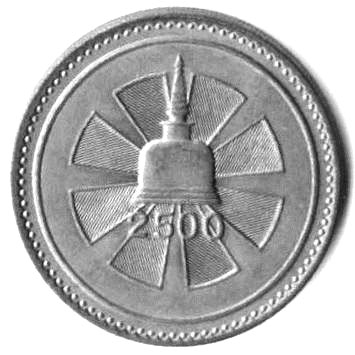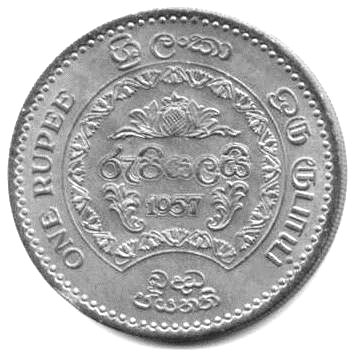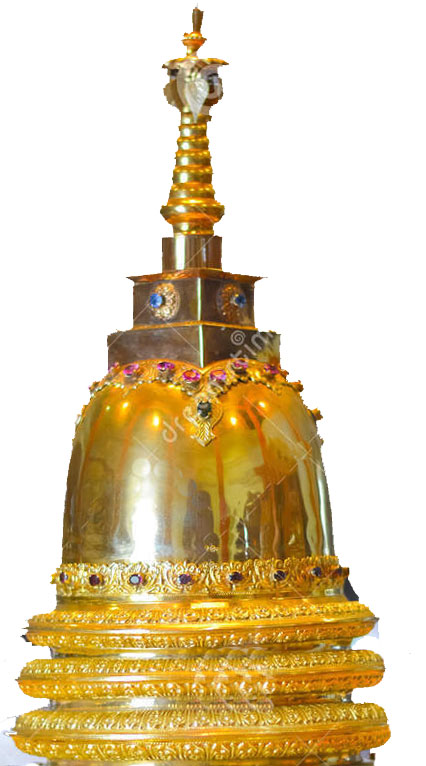| SPECIFICATIONS | |
| Denomination | Rupees one |
| Alloy | Cupro-Nickel |
| Diameter | 28.50 mm |
| Thickness | 2.2 mm |
| Weight | 11.31 gms |
| Shape | Round |
| Edge | Grained |
| Die-Axis | 0° |
| Issue | 2,000,000 |
| Proof | 1,800 |
| Mint | Royal,London |





|

|

| ||||||||||||||||||||||||
| KM# 125 | ||||||||||||||||||||||||||
Obverse : The Dhamma Chakra over which is impose a Buddhist
Relic Casket (Karaduwa) in the shape of a Bell shaped stupa and
the numeral 2500 below it.
Reverse : A design based on the traditional
Sinhala design using the Pineapple motif. The value
රුපියලයි in Sinhala,
and the year of issue 1957 is superimposed in the center. The value
ONE RUPEE on left, and
ஒரு ரூபாய் in Thamil
on right. The Sinhala name of country
ශ්රී ලංකා
(Sri Lanka) on top. The anniversary
බුදධ ජයනති
(Buddha Jayanthi) also only in Sinhala at the bottom.
These coins are popularly referred to as the Buddha Jayanthi coins. The Bell shape is probably a representation of one of the caskets of the Tooth Relic. It is unlike Bubble shape of the popular Dagaba/Stupa in Buddhist Vihara in Lanka.
Scholars generally agree on 563 BCE. as the year of the birth of Buddha (563-483 BC). Despite all efforts, the dates of the Buddha's birth and death remain uncertain. The various Buddhist sources agree that the Buddha lived for 80 years, but they disagree on the precise dates. Modern Theravada countries place his birth in 623 BC, and his death in 543 BCE. but these dates are rejected by most Western and Indian historians. The ancient chronology, based on Sinhalese sources in Sri Lanka places the Buddha's Parinibbana 218 years before King Asoka's consecration.
The Maurya Dynasty (321-185 BCE. emerged following the withdrawal of Alexander the Great from India in 325 BCE. when the dynasty's founder, Emperor Chandragupta reigned for twenty-four years (321-297 BCE. before abdicating his throne in favour of his son, Bundusara. His system of government continued under Bundusara, who left no noticeable mark upon the empire. Bundusara was succeeded by his son, Asoka, in 273 BC, although, as was usual, Asoka was not consecrated as Emperor until 265 BC. This puts Buddha's death in 483 BCE. Buddha attained enlightenment in 528 BCE. The Buddhist Era start in 543 BCE by Ancient tradition based most probabaly on Astrology and the expected Horoscope of the Buddha, ignoring the 60 year error.
The coins were scanned at 300 dpi and the images are displayed at 254 dpi.
The uncirculated commemorative coin were obtained many years ago from the
Central Bank of Ceylon.

